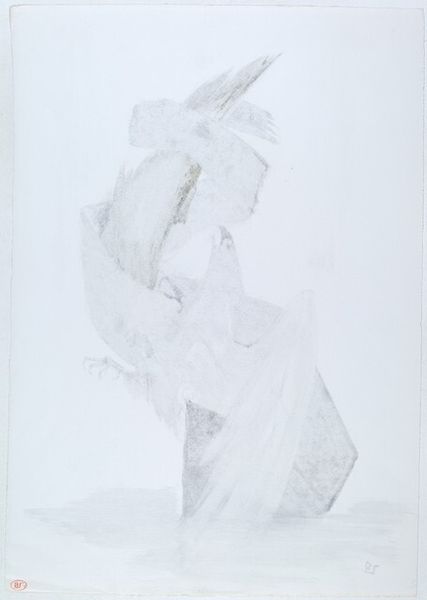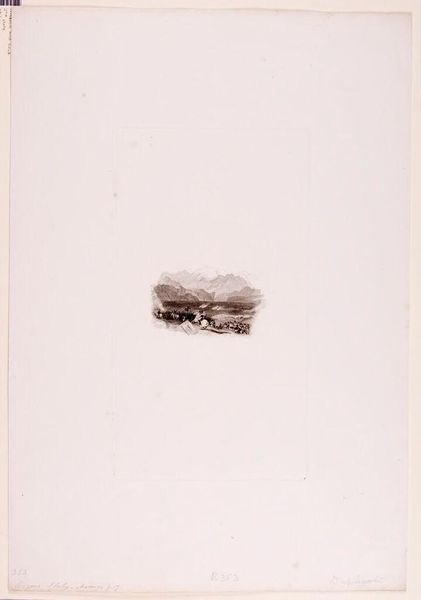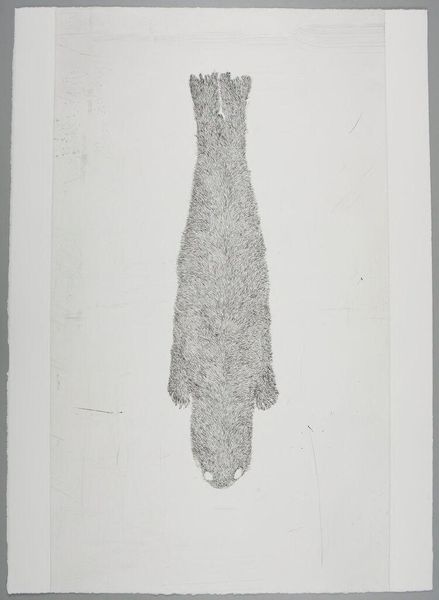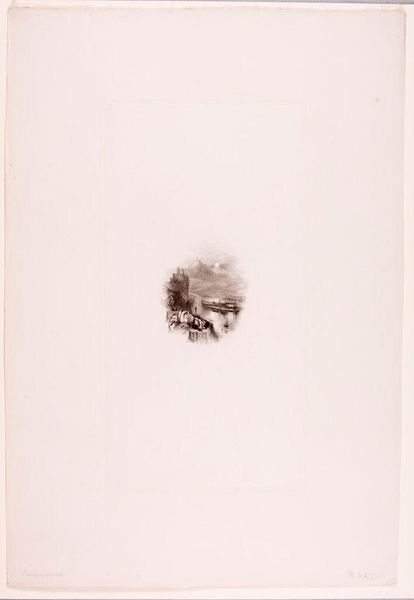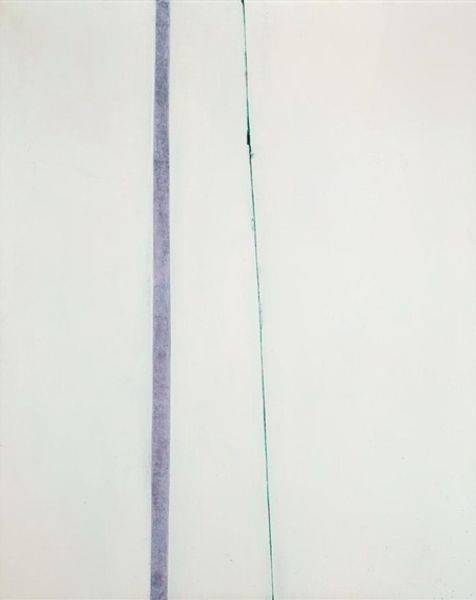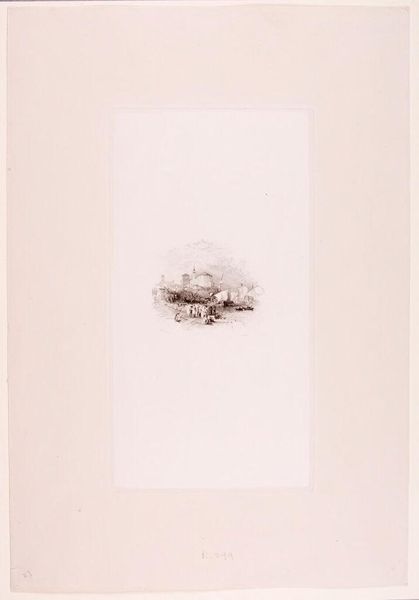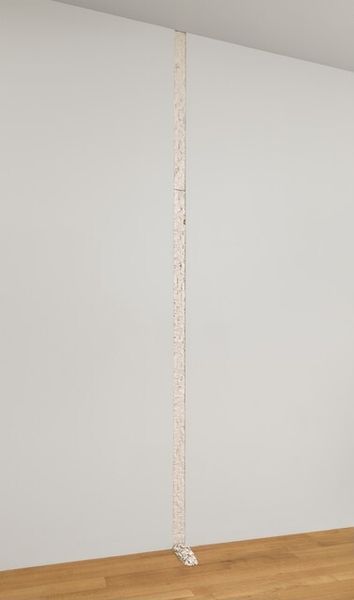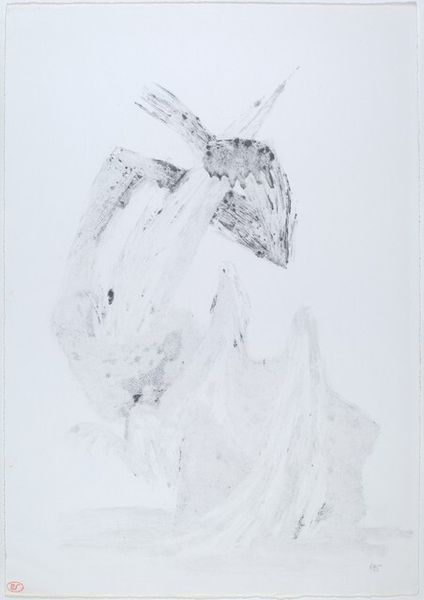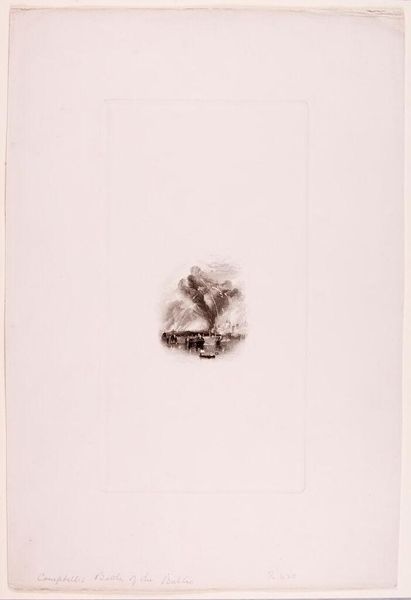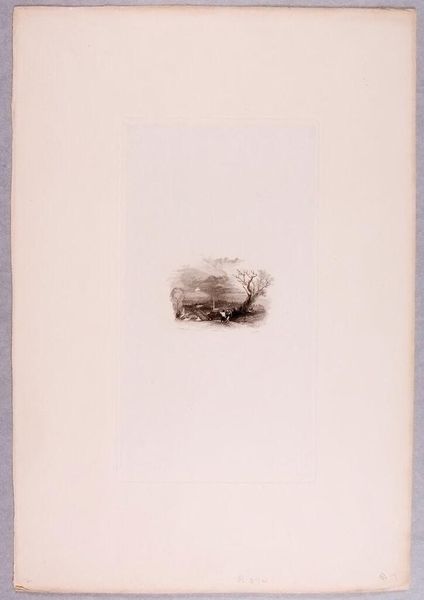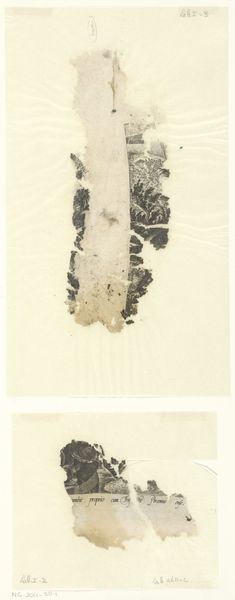
print, etching
# print
#
etching
#
etching
#
abstract
#
form
#
monochrome
Copyright: National Gallery of Art: CC0 1.0
Curator: Here we have Ezio Martinelli's "Last Quarter," an etching from 1961. Editor: It's surprisingly subtle. The monochrome palette almost blends into the wall, yet the textured form commands attention. It has an organic quality, doesn’t it? Reminds me of weathered stone or perhaps a decaying bone. Curator: It is indeed the masterful use of etching techniques which bring to life that remarkable textured form. Consider Martinelli's process: layering acids and resists, each stage eroding the plate and building dimension, revealing the imprint not just of form, but of labor and time. How does that affect your perception of the image? Editor: Knowing the intricacy of the method reinforces my initial feeling. It’s like a slow unveiling, with the etching process mimicking the natural forces of erosion and change. It’s elegantly balanced and almost serene in its simplicity of form. It really encourages us to notice how variations in texture become visual cues. Curator: Right, because within the social context of the post-war era, Martinelli, alongside many others, engaged with the ideas of existentialism and a turn towards abstraction that reflected a growing skepticism of the industrialized world. By utilizing methods rooted in labor-intensive work he elevated these tactile methods into a statement. Editor: Yes! The restricted palette and abstract forms underscore its modernist foundations. Formally, it invites an introspective exploration of surface and shape. But what kind of symbolic meanings can the texture hold for viewers today, reflecting both erosion and renewal? Curator: Good question. The work serves as a potent reminder of art's capacity to elicit a powerful emotive response. For instance, how do we find new methods to address questions around value when thinking about both artist and maker today? Editor: Definitely food for thought. The piece is both simple in its execution and really complex. It gives me the chance to observe something quiet today. Thanks. Curator: Likewise. It is a testament to Martinelli's capacity to convert materials into emotive meditations on existence, technique and expression in art history.
Comments
No comments
Be the first to comment and join the conversation on the ultimate creative platform.
